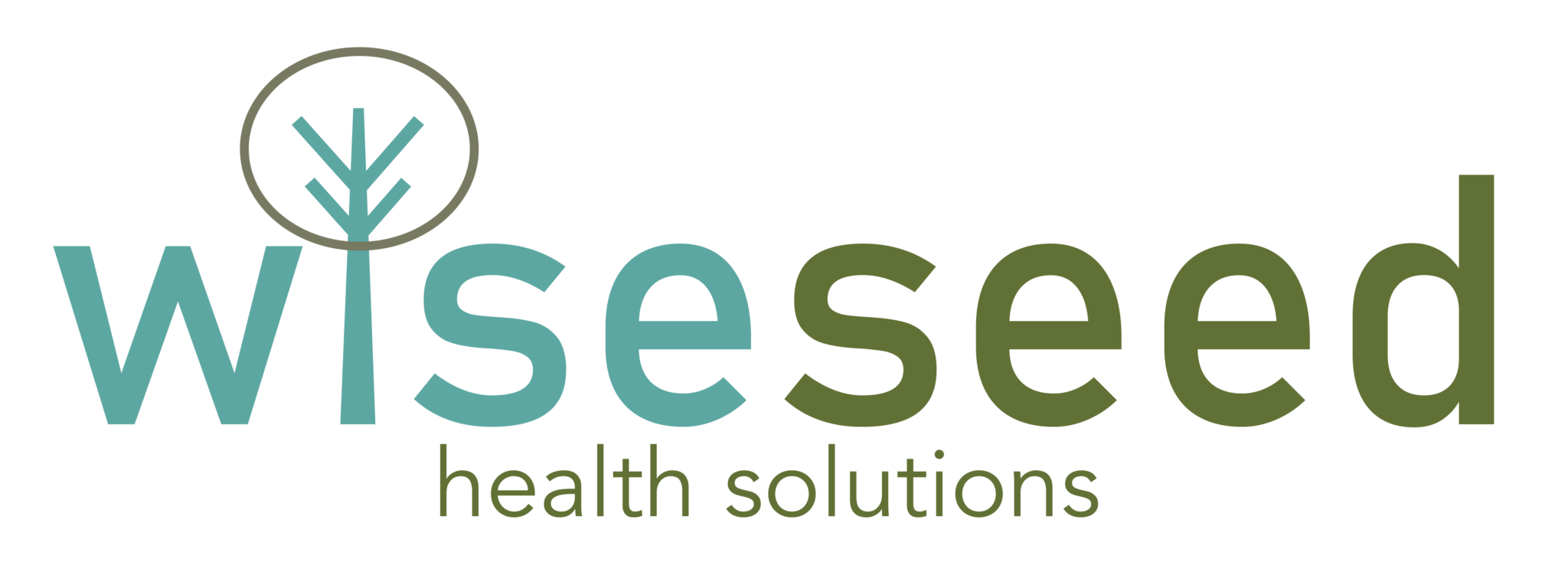Building Resilient Communities
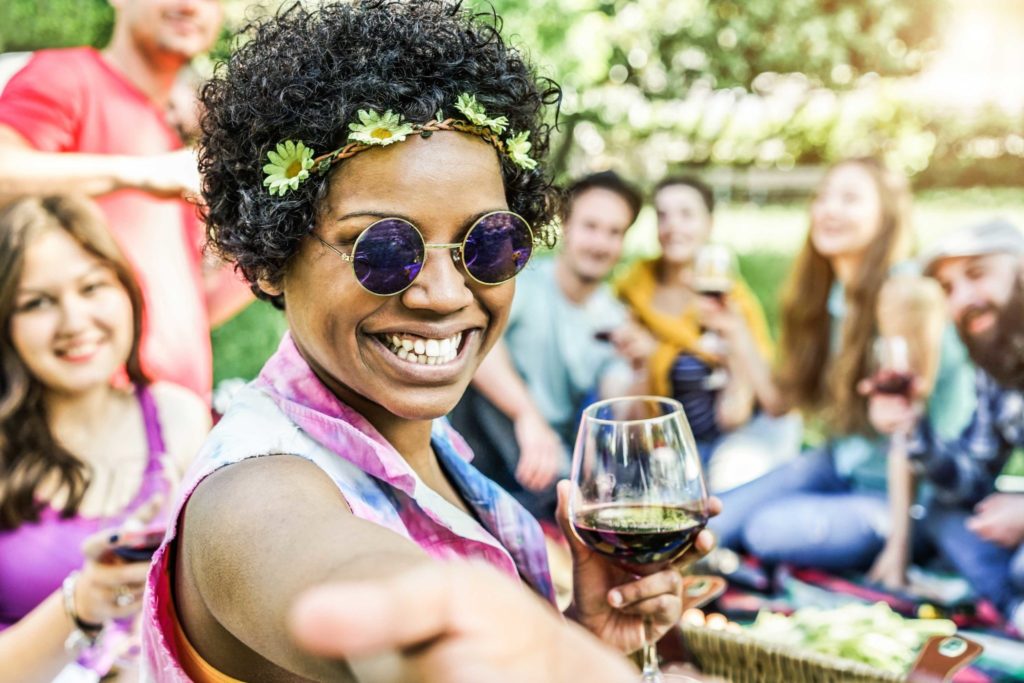
The Context
We’ve previously discussed how society is moving through a range of critical changes and the resulting need to vigorously pivot towards a future of human flourishing (you can find that article here). These changes represent periods of substantial instability as evidenced by what we see around us today: the continuing impact of COVID-19, electoral volatility and intense politicisation, unceasing waves of on-line hate, the breakdown of confidence in democratic institutions, and escalating civil unrest.
In times like these, it’s easy to become frustrated with broad swathes of the community, turn your back, and decide to go it alone. Although this could appear to be an emotionally engaging idea, abandoning the community domain of the Everyday Resilience Framework (ERF) will only impair your overall capacity for resilience – the very thing you are likely to draw on during these turbulent times.
The criticality of community in times of division and discord
We’ve previously highlighted the Community domain of the ERF in an earlier article. I encourage you to review this article and its three recommended practices of:
– being prosocial and helping others
– choosing and nurturing positive friendships
– cultivating a broader support network
Although these practices where selected owing to their value and applicability in daily living (hence the reference to ‘everyday’ resilience), they still have relevance during times of discord and should be maintained. However, there are additional community-related practices that you can apply during times of crisis that further support not just your resilience, but the resilience of your social connections and the broader communities you are part of.
Additional community-domain practices to enhance your resilience in times of discord
We recommend three additional community-orientated resilience practices applicable in times of adversity and discord. Although these practices require additional effort and intentionality beyond the ‘everyday’ sense, they are highly relevant during times of instability and align with the Community domain.
These additional practices are:
– intentionally check in with your social connections
– look for opportunities to support and build the resilience of your community
– methodically improve your collective sensemaking
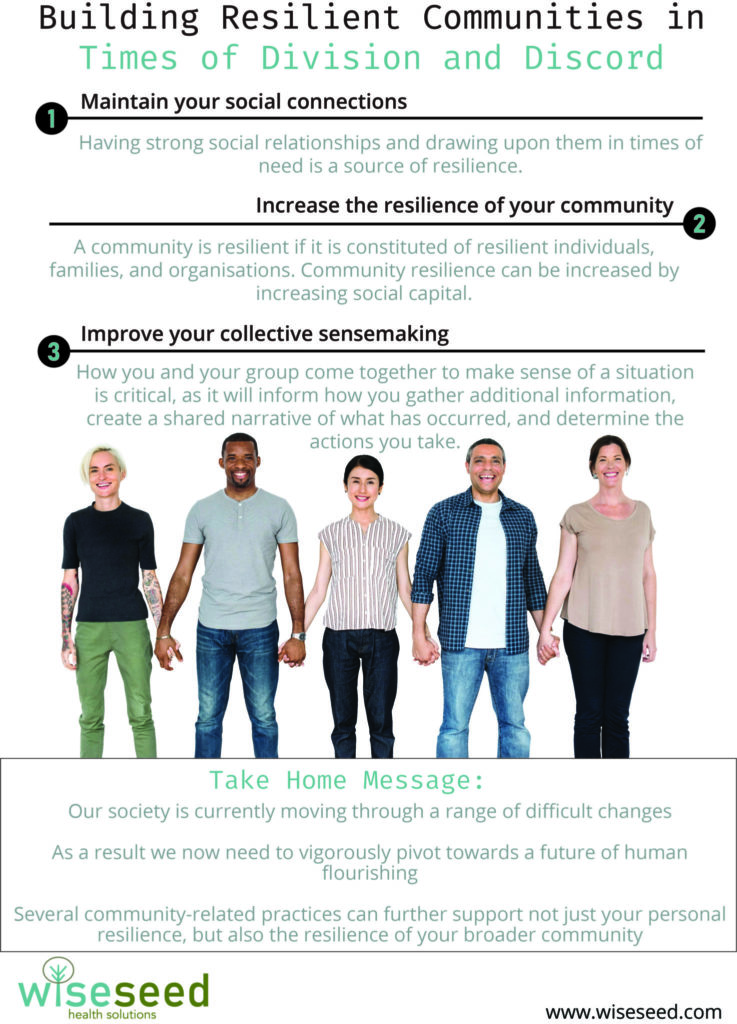
1 Intentionally check in with your social connections
When we experience a personal crisis or a seismic shock to our beliefs, we can experience a powerful need to close ourselves away from others and ‘shut down’ (1). It’s unclear why a crisis experience can often trigger a turning inward and subsequent disconnection from your support network at the time it is often needed most (2). However, as we highlighted in our Community domain article, having strong social relationships and drawing upon them in times of need is a source of resilience and stress reduction, not a drain.
You need to be self-aware if you have withdrawn and closed yourself off from your social connections – indeed, you may have already unconsciously done this during this acutely turbulent time. Instead of withdrawing, intentionally reach out and check in with your tribe to see if they are OK, as the underpinning value of a tribe is that its members look out for one another in times of adversity. Checking in with your connections in an authentic way, rather than isolating yourself from them, is a key aspect of retaining that value.
2 Look for opportunities to support and build the resilience of your community
A community is more likely to be resilient if it is constituted of resilient individuals, families, and organisations. Still, actual community resilience is ultimately dependent upon the active interaction of these three elements (3, 4). Put simply, a community cannot be resilient if its resilient components remain isolated from one another and refuse to communicate.
Turning away and isolating yourself from your community will not improve your resilience, as there is a strong inter-relationship between community resilience and personal resilience, in that personal resilience is promoted by social connectedness and a sense of place (5). Further, a resilient community also extends your envelope of personal resilience, in the sense that a community with high social capital reduces the impact of disasters when they strike and enhances recovery (6, 7).
Critically, this means that you need to invest in community resilience by helping to create social capital through volunteering (which also improves your mental health), helping people who are experiencing vulnerability, and displaying the behaviours and attitudes that generate a broader sense of community (8).
3 Methodically improve your collective sensemaking
In times of uncertainty, we must also be self-aware of the powerful influence our social connections have on our worldview (9) and how we make sense of what is happening. In addition to the potent influence of our social group, our ability to make sense and understand what is happening during times of crisis and discord is further challenged by:
– the in-built negativity bias within all humans that means we disproportionately look for the downside of things instead of the positive (10, 11)
– heightened susceptibility to fraud, spin, and disinformation (12, 13)
– large volumes of online hate
– the emergence of ‘infodemics’ and the associated overwhelming deluge of abundant information, creating the challenge of figuring out which information we should trust and act on (14)
– the creation and rapid sharing of conspiracy theories as a way of creating a ready narrative (15)
– a human need to try to resolve uncertainty as soon as possible, which can quickly default to reaching for simple (but sometimes erroneous) explanations (16)
Given this brew of negative influences, how you and your group come together to make sense of a situation is critical, as it will inform how you gather additional information, create a shared narrative of what has occurred, and determine the actions you take (17). To assist in supporting sense-making, we recommend you consider using the SIFT technique when reviewing information and developing an understanding of what is happening around you (18). The technique is simple and easy to apply, and it provides you with a consistent way of processing information in the middle of an infodemic.
The take-home message
From a personal resilience perspective, it’s never a good time to ‘go it alone’, and this remains true during times of division and discord. Instead, you can extend the existing practices of the ERF’s Community domain to check in with your social connections, look for opportunities to contribute to the resilience of your community, and engage in careful sensemaking. Above all, you need to keep engaging with your fellow humans.
Please click the link below to download you free PDF.
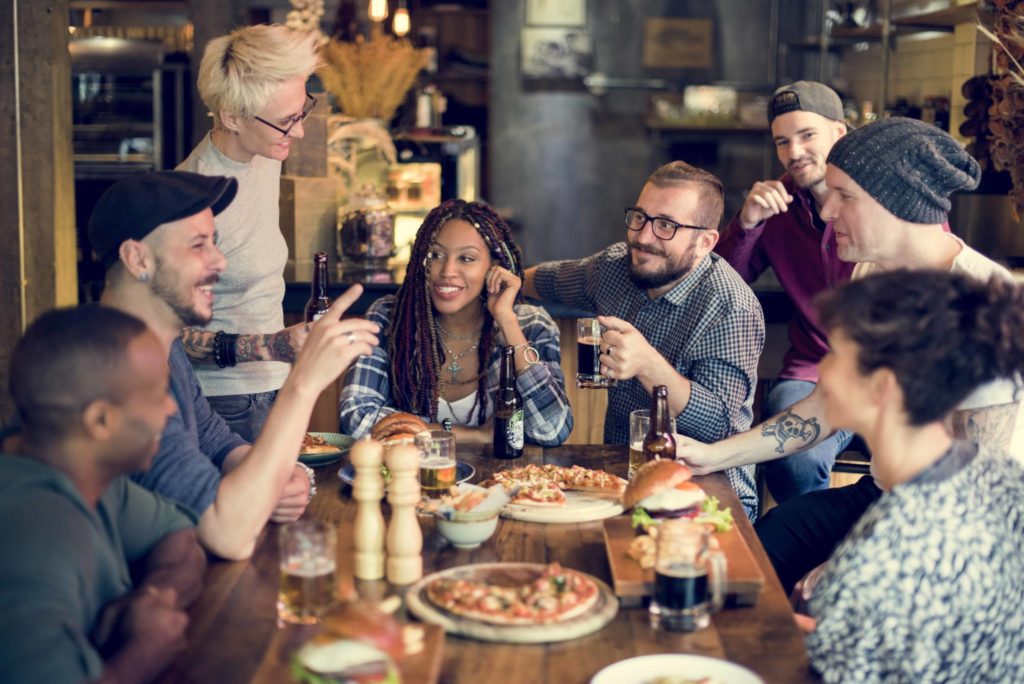
References
1 Cawthorn, S. (2020) How to Bounce Forward. Wiley.
2 ibid.
3 Houston, J.B. Community resilience and communication: dynamic interconnections between and among individuals, families, and organizations. Journal of Applied Communication Research, 46:1, 19-22 (2018).
4 Duckers, M. A multilayered psychosocial resilience framework and its implications for community-focused crisis management. Journal of Contingencies and Crisis Management, 25:3, 182-187 (2017).
5 Boon, H.J. Disaster resilience in a flood-impacted rural Australian town. Natural Hazards, 71,683–701 (2014). doi.org/10.1007/s11069-013-0935-0
6 Mayer, B. A. Review of the Literature on Community Resilience and Disaster Recovery. Current Environment Health Report, 6,167–173 (2019). doi.org/10.1007/s40572-019-00239-3
7 Aldrich D.P. The Importance of Social Capital in Building Community Resilience. In: Yan W., Galloway W. (eds) Rethinking Resilience, Adaptation and Transformation in a Time of Change. Springer. (2017). doi.org/10.1007/978-3-319-50171-0_23
8 Kwok, A.H., et al. What is ‘social resilience’? Perspectives of disaster researchers, emergency management practitioners, and policymakers in New Zealand. International Journal of Disaster Risk Reduction, 19, 197-211 (2016).
9 British Psychological Society. That’s what friends are for. ScienceDaily. ScienceDaily, 20 April 2017. <www.sciencedaily.com/releases/2017/04/170420113921.htm>
10 Bebbington, K., et al. The sky is falling: evidence of a negativity bias in the social transmission of information. Evolution and Human Behavior, 38:1, 92-101 (2017). doi.org/10.1016/j.evolhumbehav.2016.07.004
11 Cherry, K. What Is the Negativity Bias? Very Well Mind. https://www.verywellmind.com/negative-bias-4589618. Accessed 1 November 2020.
12 Nemeth, D. & Olivier, T. Community Resilience: Baton Rouge – A Community in Crisis – Grieving and Moving Forward. Innovative Approaches to Individual and Community Resilience, 59-76 (2017).
13 Starbird, K. How a Crisis Researcher Makes Sense of COVID-19 Misinformation. One Zero. <https://onezero.medium.com/reflecting-on-the-covid-19-infodemic-as-a-crisis-informatics-researcher-ce0656fa4d0a>. Accessed 2 November 2020.
14 ibid.
15 Kou, Y., et al. Conspiracy Talk on Social Media: Collective Sensemaking during a Public Health Crisis. Proceedings of the ACM on Human-Computer Interaction, Article 61(2017).doi.org/10.1145/3134696
16 Starbird, K. How a Crisis Researcher Makes Sense of COVID-19 Misinformation. One Zero. <https://onezero.medium.com/reflecting-on-the-covid-19-infodemic-as-a-crisis-informatics-researcher-ce0656fa4d0a>. Accessed 2 November 2020.
17 ibid.
18 Caulfield, M. SIFT (The Four Moves). Hapgood. <https://hapgood.us/2019/06/19/sift-the-four-moves>. Accessed 2 November 2020.
Disclaimer
The material displayed on this website is provided without any guarantees, conditions or warranties as to its accuracy.
Information written and expressed on this website is for education purposes and interest only. It is not intended to replace advice from your medical or healthcare professional.
You are encouraged to make your own health care choices based on your own research and in conjunction with your qualified practitioner.
The information provided on this website is not intended to provide a diagnosis, treatment or cure for any diseases. You should seek medical attention before undertaking any diet, exercise, other health program or other procedure described on this website.
To the fullest extent permitted by law we hereby expressly exclude all warranties and other terms which might otherwise be implied by statute, common law or the law of equity and must not be liable for any damages whatsoever, including but without limitation to any direct, indirect, special, consequential, punitive or incidental damages, or damages for loss of use, profits, data or other intangibles, damage to goodwill or reputation, injury or death, or the cost of procurement of substitute goods and services, arising out of or related to the use, inability to use, performance or failures of this website or any linked sites and any materials or information posted on those sites, irrespective of whether such damages were foreseeable or arise in contract, tort, equity, restitution, by statute, at common law or otherwise.
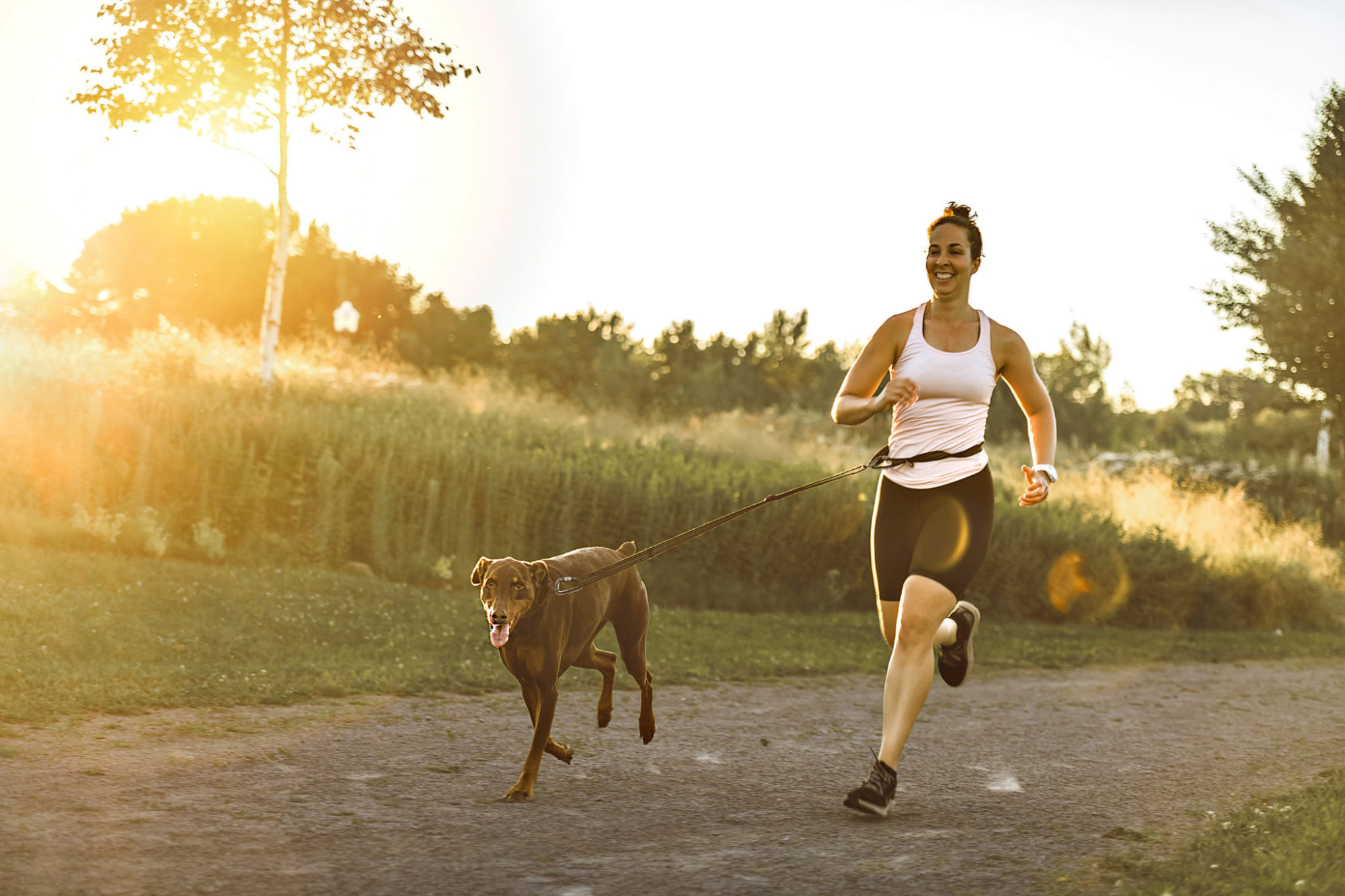
Ten Minutes is All You Need
Research has shown that ten minutes of moderate-to-vigorous exercise performed each day is enough to significantly reduce your risk of early death.

How to Perform Efficient Strength Workouts
Lack of time to is the primary reason why people don’t regularly exercise. Designing time-efficient and effective strength workouts may help.
